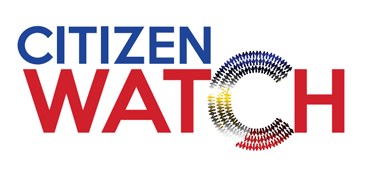Digital readiness paradigm
July 26, 2021by Orlando Oxales originally pblished in The Manila Standard
“The technology is there but we must have the openness to learn.”
When we hear the word “digital,” we instinctively imagine the realm of hi-tech gadgetry, smart phones, high-speed internet, the cloud, apps, databases, and all the online content we habitually log on to for work and entertainment. For consumers living in a pandemic, these technologies are just indispensable. Still, many end-users have little understanding of the complexity and the enormous investments needed to build and sustain a network of digital infrastructures to support this convergence of services we access through our phones, tablets, and computers.
According to the 2021 We Are Social report of Hootsuite, out of our population of about 110 million, 67 percent or more than 73 million are internet users. The report also counts 152.4 million mobile accounts (138.2 percent of population) which means more than 38 percent have more than one subscription. 89 million or 80.7 percent are active social media users. By these impressive figures, one might say that we should have no problem shifting to a digital economy since most of us are already comfortable going online. Well, not quite.
Being the world’s heaviest user of the internet—with Filipinos said to be logged on an average of 10 hours through their mobile apps and social media platforms—does not translate to our digital readiness to compete globally as a digital economy. Digital readiness actually involves an end-to-end spectrum of transformation through knowledge, skills, policy, investment, and deployment of the right technologies.
The World Bank Digital Economy 2020 report introduced the CHIP (Connect, Harness, Innovate, and Protect) framework which the Department of Information and Communications Technology (DICT) has adopted to restructure its programs towards accelerating digital transformation and boost the country’s digital economy.
According to the DICT’s recent statement, the ‘Connect’ component “is focused on building digital infrastructure by first establishing a connection to the world through International Cable Landing Stations. The Department shall then cascade broadband Internet access throughout the country through the building of the National Fiber Backbone, which is further connected to middle- and last-mile connections.”
Three major programs being implemented are: The National Government Data Center aimed to address latency by hosting government and education content, The Free Wi-Fi for All to increase public access to secure internet in all public areas and geographically isolated areas, and the National Broadband Plan “which aims to accelerate the deployment of fiber optic cables and wireless technology through private sector and Local Government Unit partnerships.”
Some LGUs are already engaging the private telcos such as Mandaluyong City’s Free Wi-fi initiative in partnership with Globe Telecom which deployed AMBER facilities to boost their daily information and communication campaign and support coordination of their MandaVax vaccination program. When the lockdowns started last year, GoWifi hotspots were also installed at the National Center for Mental Health, Puregold Price Club-Shaw, and at the Mandaluyong Public Markets 1 & 2. These practical and easily executable collaborations should be encouraged.
The ‘Harness’ component is about developing the ICT skills of Filipinos where the DICT will invest in digital education to ensure the readiness of the country’s workforce which is critical in the country’s global competitiveness. Considering the problems of the education sector made worse by this crisis, I believe this part may prove to be the most challenging.
The ‘Innovate’ component “focuses on the continuous digitalization and integration of government and business services online pursuant to the Ease of Doing Business and Efficient Government Service Delivery Act of 2018” where LGUs and government agencies must streamline their bureaucratic processes and business operations using the appropriate cloud-based solutions. Ongoing programs are the Central Business Portal which allows business registrants to apply for the necessary permits and licenses from the national government agencies online, and the Electronic Business Permits and Licensing System which streamlines the processing of various permits and licenses in all cities and municipalities.
The last but equally important is the ‘Protect’ component which focuses on cybersecurity and data privacy which are real risks that every netizen, and especially public or private enterprise must take seriously.
This CHIP framework is a good approach that both government and the private sector can apply in their digital transformation journey. To be digital ready so we can, as individuals, as an enterprise, as an industry, and as a nation, compete in a fast paced and continuously evolving digital world. We will need a drastic paradigm shift from the high friction, hard copy, analogue system of doing business to the light speed ultra-dynamic digital solutions that sets no boundaries for innovation.
The technology is there for us to harness. But we must have the openness to learn, to re-tool ourselves with new competencies, and to adapt to digitized workflows that will realize sustainable growth and prosperity.
